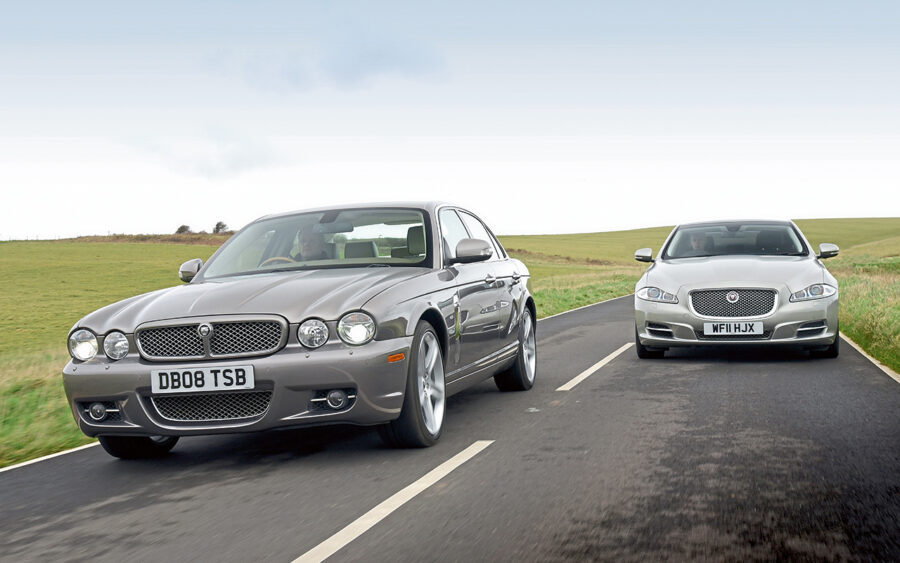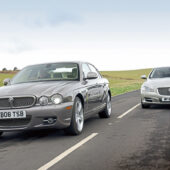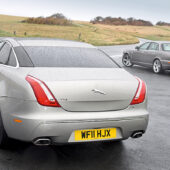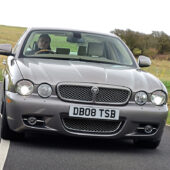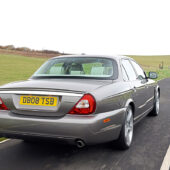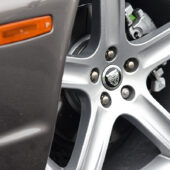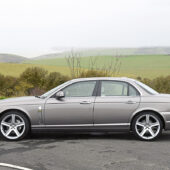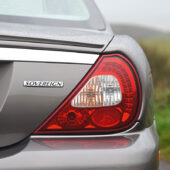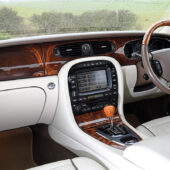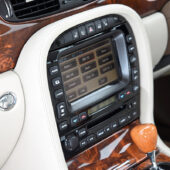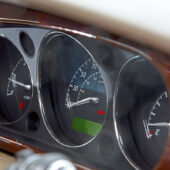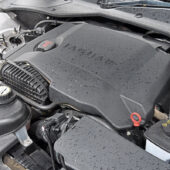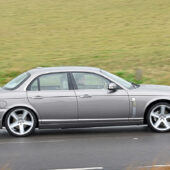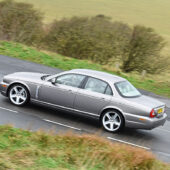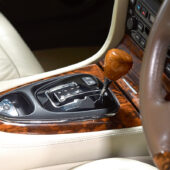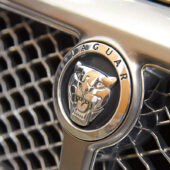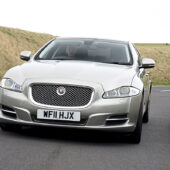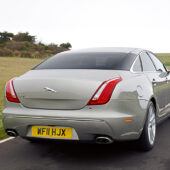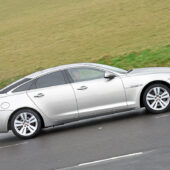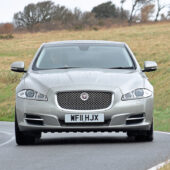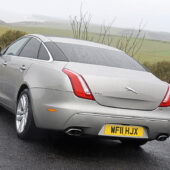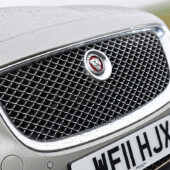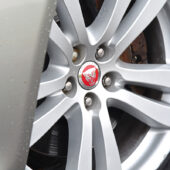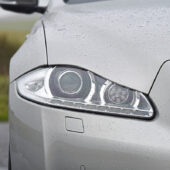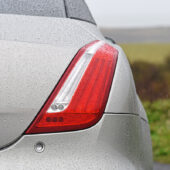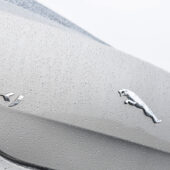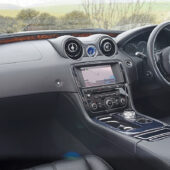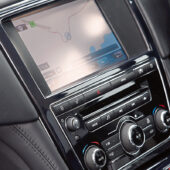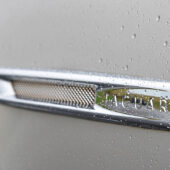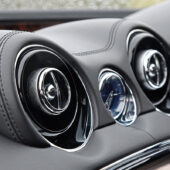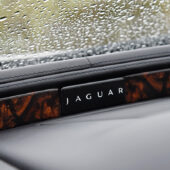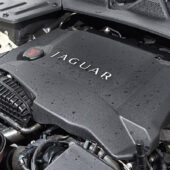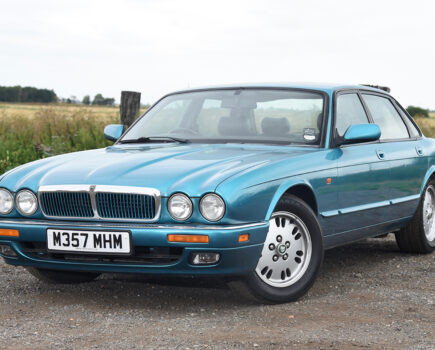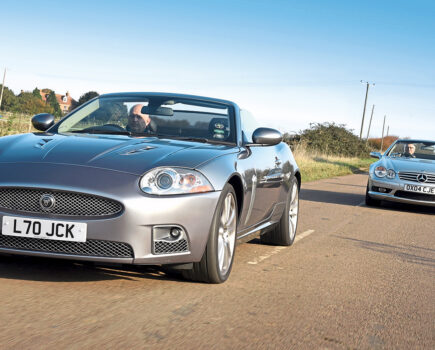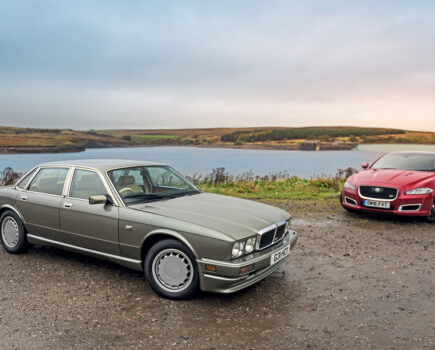The radical X351 XJ brought Jaguar’s design language into the modern age when it replaced the X358. We sample both
Words and images: Paul Walton
In 2011, the South African entrepreneur Elon Musk said, “Some people don’t like change, but you need to embrace change if the alternative is disaster.” And disaster is exactly what Jaguar was facing in the mid-2000s due to the XJ’s lack of design progress. Despite a major facelift in 2007 that had helped to keep the then-current model relevant (the eventual X358), the car was still old fashioned alongside newer rivals. So Jaguar decided to give it a major update.
The result was the X351 from 2010. Its svelte coupe-like design was unlike any other model before, as were the slim headlights and tall taillights. Ironically, while the X358 and X351 look as different as two cars can be, beneath the surface they share the same platform.
Although the press was generally positive about this new direction, many traditionalists didn’t share its opinions. Today, the car still courts controversy like no other XJ.
So, which is the best model to buy? The last traditional XJ or the first modern model? We compare a diesel example of both to find out.
The catalyst for the change was the design director of the time, Ian Callum. Ever since this former Aston Martin and Ford designer had joined Jaguar in 1999 he had wanted to move the company’s designs away from its long retro phase, which included the S-Type and X-Type. But the car he disliked the most was the X350-generation XJ.
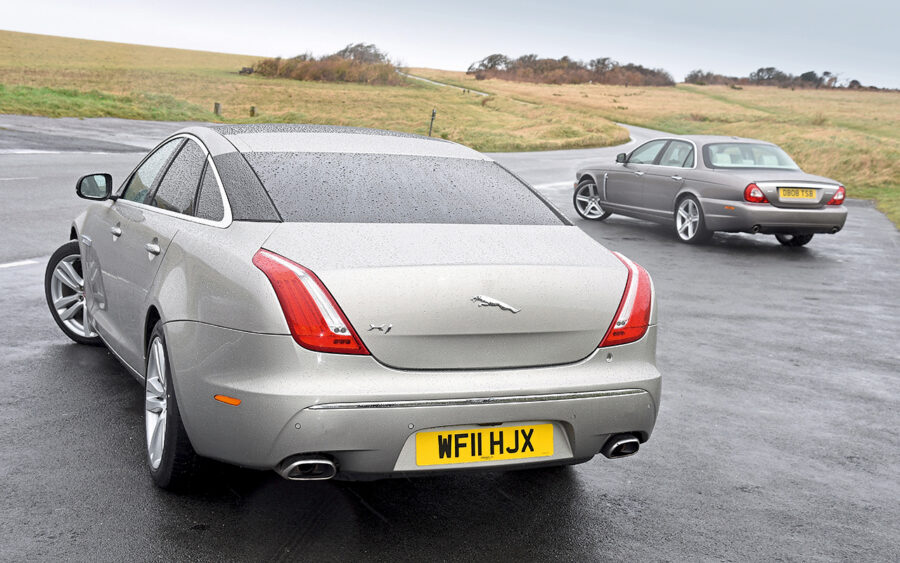
Revealed in 2002, its design had been signed off before Callum’s arrival, so he had little – if any – influence on the finished car. He felt the company had missed an opportunity to break with tradition and create something more contemporary.
“I did protest slightly about the car,” Callum told Jaguar World magazine during an interview in its December 2014 issue, “but was told quite categorically that there would be no change. I really had no idea how to behave, so I did as I was told. But, in retrospect, I should have been a bit more outspoken and could have changed it.”
To be fair on Callum’s predecessor, the late Geoff Lawson, the car’s design was dictated by Jaguar’s owner, Ford, whose executives had very fixed ideas of what a Jaguar should look like – and that was largely traditional. Lawson and his team simply did as they were told.
“Geoff and myself wanted to do something more progressive,” former designer, Fergus Pollock, told us in the May 2017 issue, “but our sketches never got very far because Ford’s then vice president of global design, J Mays, took the decision it should be the same as before, but a bit bigger.”
Callum felt so strongly about the X350 that he gathered several saloons together, from a Mk V to the new XJ, and explained to several Ford and Jaguar executives how, in the past, the company’s designs had forever evolved, and how that progression had come to a standstill. Callum apparently asked the management, “The first XJ and the X350 are 35 years apart and they look the same. What’s happened?
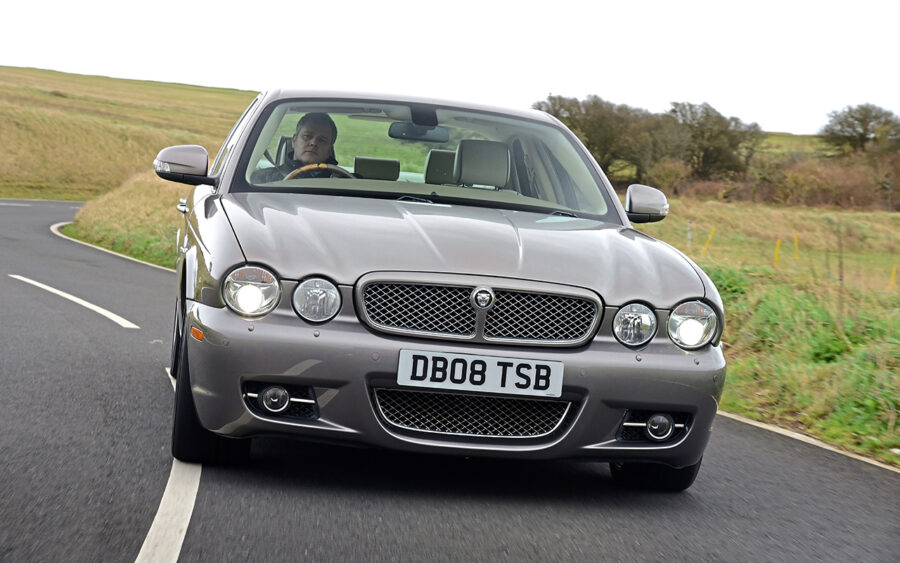
“You’ve all missed the point. Jaguar is not about conservative, old English cars; Sir William Lyons had no respect for that. The modernity curve has levelled off and it’s going to be a big jolt to get it back.”
To illustrate his intentions, Callum’s 20-year tenure as design director began during a pair of very different concepts – the R-Coupe in 2001 and the R-D6 two years later – before moving on to his first complete production car, the X150 XK from 2005. As a two-door coupe and convertible, the X150’s proportions were similar to the outgoing X100, but its crisp, taut lines were more contemporary.
The car that showed the biggest change in Jaguar’s design direction was the X250 XF that arrived two years later. Totally different from anything that had come before it, the car marked a brand-new era for Jaguar’s design, which continues today. It also pointed towards what the next generation of XJ could (and would) be.
But that was still some time away. Because the X350 was only a few years into its lifecycle, Callum and his team produced a significant facelift so that it would remain desirable in a market that was saturated with more-modern saloons. Many of the updates were first seen on the unique X350-based Concept Eight show car from 2004, including beefier front and rear bumpers, a shallower radiator grille with mesh insert, a discreet boot-mounted spoiler and, a Callum signature, vertical wing vents that would be reused on many of his future designs. The modifications weren’t radical, but with a new model on its way the resources that could be given to the facelift were limited. The critics, though, were still largely positive.
“Not all facelifts are a success,” reported Auto Express magazine in its 7 May 2007 issue, “and while the jury is still out on the XJ’s new look, you’ll definitely recognise the latest model when you see one out on the road – and that’s exactly what the doctor ordered.”
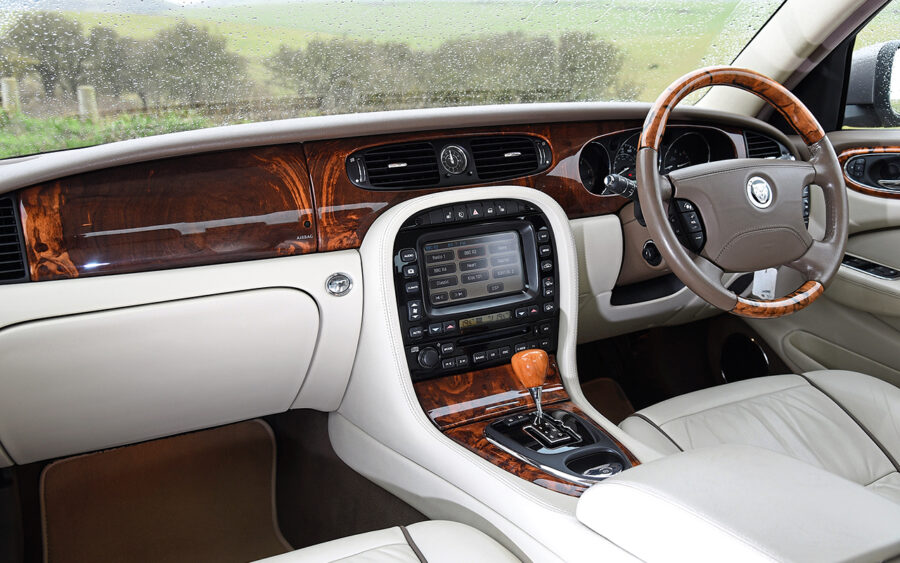
Going by this 2008 example that I’ve arranged to test, the facelift gives the car more of a bold, muscular appearance than the original X350, yet remains unmistakably a Jaguar. There’s no denying its three-box shape (bonnet, roof and boot) is old fashioned compared to the more svelte X351 parked alongside, but it has close to perfect proportions. It does have a relatively high roof, meaning the car lacks the graciousness of its X308 XJ8 predecessor, which is 102mm lower, but the huge 20in ‘Callisto’ five-spoke alloys, which were fitted to the Sovereign specification as standard, lend the car more of an aggressive stance than its immediate forebear.
The interior is the last word in old-fashioned luxury – every surface is covered in either wood or leather. Although the design was largely left intact during the facelift, the quality of the materials was clearly an improvement over the earlier models. The huge swathes of wood across the dash have a deeper lustre than the Queen’s dining table, while the leather upholstery is softer than Her Majesty’s living room sofa. This traditional atmosphere dates the X358’s interior, as does its switchgear. The huge buttons around the X358’s 7in touchscreen are big and clunky compared to those in a BMW 7 Series, Mercedes S-Class or even its own replacement, while the central console’s layout is just confusing.
This particular example has the 2.7-litre twin turbo V6 diesel, which was developed jointly by Ford and the French PSA Group and made an option with the XJ in 2006. With 35mpg, the improved economy over the petrol models put the XJ in the owner/driver market for the first time. Yet the company’s established, chauffeur-driven clientele weren’t alienated either on account of Jaguar being the first manufacturer to use electronically controlled active engine mounts for high levels of smoothness and refinement.
The V6 diesel wasn’t only economic, its 204bhp gave the car a genuine Jaguar-like performance: with a top speed of 141mph it could reach 60mph in a mere 7.8 seconds. Little wonder the car was reasonably successful – 8,786 XJ2.7s were produced between 2006 and 2009, which was 2,500 more than the 3.5-litre V8 model on sale for two years longer.
It’s easy to understand the car’s appeal. Squeezing the accelerator releases a sudden, surprisingly hard (but always whisper-quiet) surge of power. The six-speed ZF automatic gearbox is quick and responsive, changing down bang on time to release more of the engine’s 233lb ft of torque. The car also cruises effortlessly at 70mph, the cabin remaining quieter than a family of mice in a monastery.
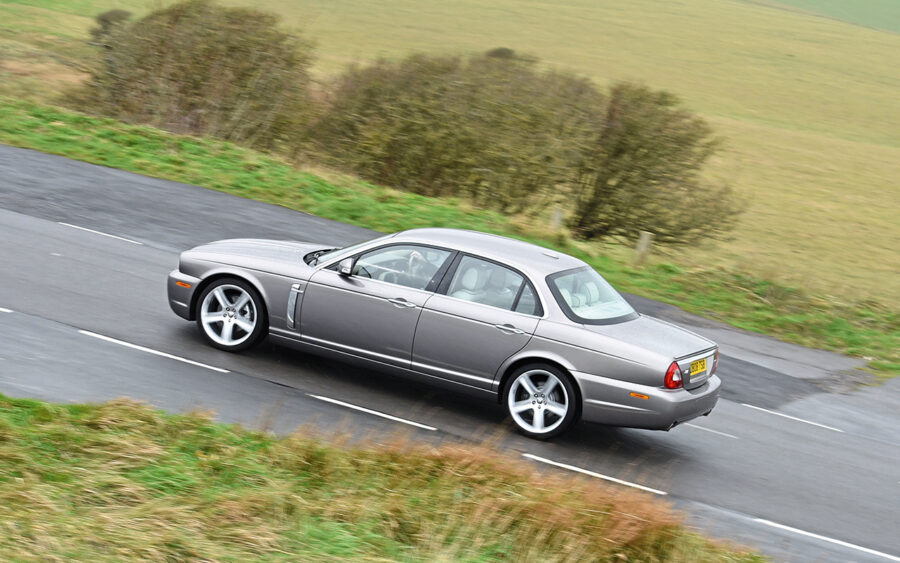
At 5,055mm long and 1,854mm wide, the X358 is a chunk of a car, but thanks to its all-aluminium construction it doesn’t feel it. Weighing 1,660kg (50kg lighter than the X308 XJ8 4.0-litre), it carves its way through corners like a saloon half its size. While it comes with computer active technology suspension (or CATS) as standard (which constantly monitors the XJ’s air springs to maintain its stability through corners), the X358 is not a sports saloon; the suspension is set for comfort rather than performance, and imperfections in the road are barely felt in the cabin.
A truly majestic car and a worthy end to the traditional XJ design. But was the new car an improvement or a change too far?
Work started on the X358’s replacement in 2006, and its design was signed off in 2008. From the outset, Callum and his team wanted to produce something new that still had links with the past. Explains Callum in Nick Hull’s 2015 book, Jaguar Design – A Story of Style, “The Fifties and Sixties were the heyday of Jaguar, so we have analysed the proportions and the architecture of the time and have applied them to a modern Jaguar.”
Yet, when the car was revealed at London’s Saatchi Gallery in 2009, by American comedian Jay Leno, it resembled no other XJ before it. Low, sleek and with a coupe-like profile, it was to a traditional X358 design what an iPhone is to a carriage clock.
Although it’s said that the large radiator grille was inspired by that of the original XJ6, the nose was also very different. The familiar quad headlights had gone, replaced by a pair of slim lenses, set slightly back to create a unique but strong front. At the rear, there were vertical ‘cat’s claw’ lights, so called because they extend into the top of the wing, and almost reach the bottom of the screen.
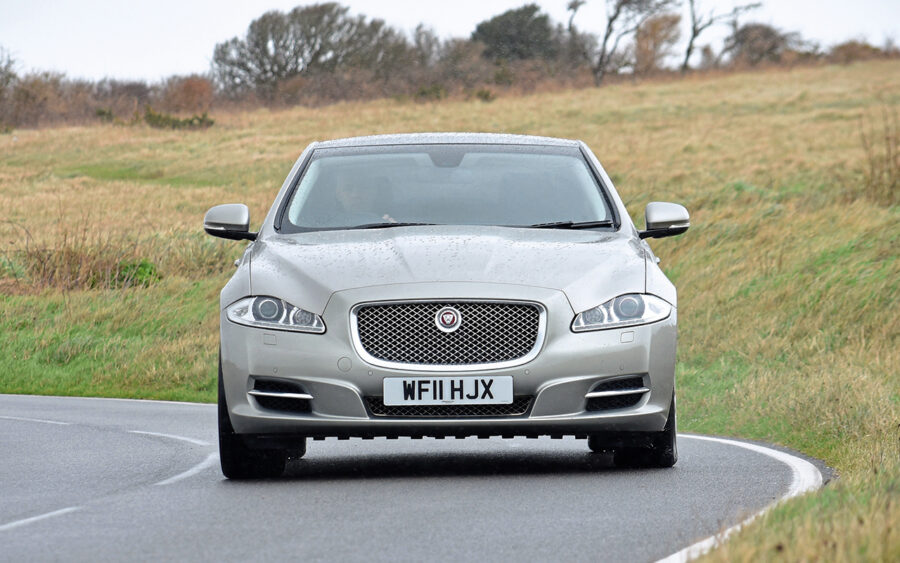
It was a radical and brave design but most critics generally appreciated the change. Car magazine described it as “a brilliant achievement” in its February 2010 issue, while two months later, Fleet News reported, “The XJ is a great achievement and a bold statement about the future of the brand.” Some acknowledged the size of the change, though, with Evo magazine admitting that its looks would take some getting used to. And they did.
Ten years later, as the design is finally becoming established and more accepted, this 2011 Premium Luxury specification now looks and feels as much like a Jaguar as the X358 or any other model. Jaguar’s customers obviously thought so, too, and while complete sales figures for the X351 have never been published, in 2011 3,684 were sold in Europe and a further 5,481 in North America. Even in 2019, the X351’s final year of production, 4,017 were produced.
However, its proportions aren’t as perfect as the older car’s, the overly long front and rear overhangs looking like an 11-year-old’s school uniform on his first day of high school. But, at 5,123mm long and 2,111mm wide, the car has a genuine, muscular presence.
The interior update was as significant as the exterior. The X358’s traditional dials were replaced with an all-digital binnacle and the huge slabs of wood were thrown out, replaced by a single sweeping thin line of veneer called the ‘Riva’ hoop (named after the famous Italian speedboat). Many X351s have no wood at all, specified instead with such other materials as Piano Black and carbon fibre. Despite the lack of wood, the many chrome accents – including the rotary gear selector, only the second time this was used after the XF – create a classy feel to the interior.
To increase the feeling of ‘sportiness’ the seats are positioned slightly lower than in the X358 and the height of the dashboard was dropped, resulting in one of my favourite aspects of the car’s interior – the twin torpedo-shaped air vents that protrude out of the centre of the dash top and which are aesthetically more interesting than the previous car’s flat surfaces.
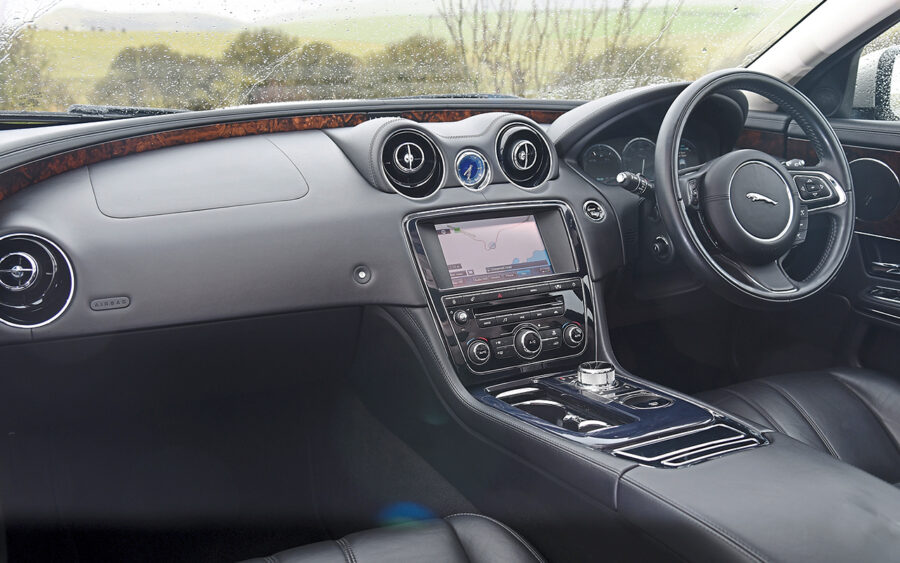
The X351’s central console is also cleaner, simpler and more contemporary; there are fewer buttons, the result of the touchscreen controlling more infotainment systems than the X358’s.
Negatives? The lack of veneer means the cabin misses out on the X358’s sense of occasion, and the car’s high waist results in relatively high windows that can make the interior feel tight and claustrophobic. The low roof, meanwhile, leaves minimal headroom for a luxury saloon.
The X351 followed what the X358 started and, from the outset, had the option of the diesel V6, increased to 2,993cc and 275bhp. The extra 70bhp over the 2.7-litre drops the X351’s 0-60mph time to a mere six seconds and raises the top speed to a limited 155mph. Despite that, the car is no manic sports saloon – it’s everything a luxury saloon should be, mainly smooth and refined. Yes, the engine is responsive, and yes, the eight-speed automatic gearbox changes when requested to deliver a smooth surge of power, but it’s all done with quiet modesty.
Twisting the gear selector one click further to the right puts the car into sport mode, and leads to a significantly more notable transformation than when doing the same in the X358. The 3.0-litre engine develops a harder edge, revving for longer before the eight-speed ’box changes up. It can still be manually overridden using steering wheel-mounted paddles, which are both faster to use and more user-friendly than the older car’s. To pull on the left-hand paddle and feel the release of torque as I change down into a corner, before changing up quickly, is a moment of pure driving pleasure.
Budgetary constraints meant the all-aluminium X351 reused the same DEW98 platform as the X358, but it feels significantly different, with the same litheness and agility as the XE. Air suspension is once again standard, so the car remains perfectly balanced through bends with little to no body roll, but plenty of grip. But, although the suspension absorbs imperfections well, it’s not as supple as the X358 and results in a slightly harder ride on the rough stuff. It’s not unpleasant, but it’s not what made all previous generations of XJ so popular.
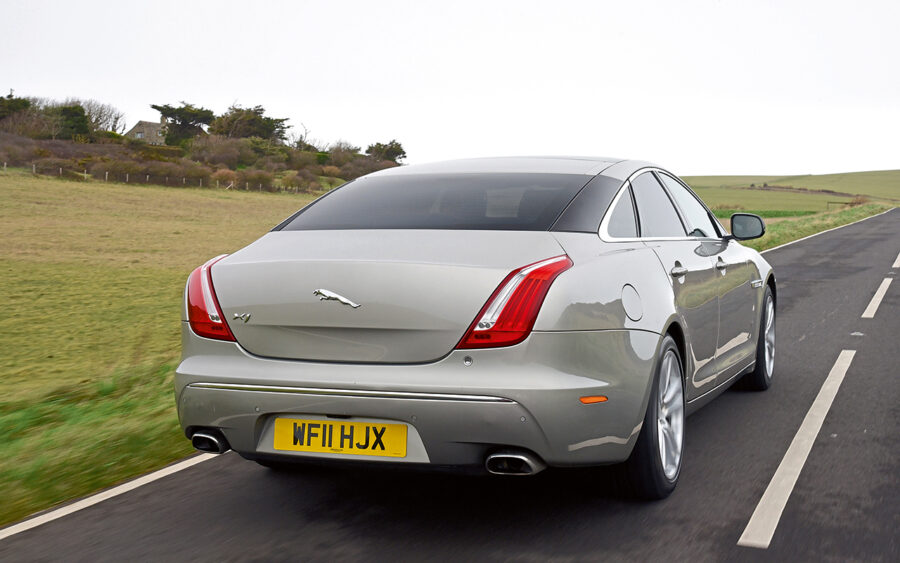
Late Sovereign 2.7s such as the 2008 example featured here are now between £8k and £10k, a similar price to early X351 3.0s from 2010, while this 2011 Premium Luxury, with 74,000 on the clock, is still only £14,000. Newer, with more modern tech and only just out of production, that makes early X351s better value. But, personally, I’d still take the X358.
I’m a huge advocate of the X351. From a 3.0 petrol to the formidable XJR575, I’ve driven plenty of examples over the years to recognise that they’re fast, comfortable and modern luxury saloons, with oodles of presence. But, I find the X358 has a much bigger and more memorable character. The 2007 facelift was just enough to modernise the classic XJ design without ruining it, and although the interior is as contemporary as the House of Lords, it’s also as warm and comfortable. I also think it’s nicer to drive; it isn’t as driver-focused maybe, but if I wanted that, I’d buy an XFR for the same money.
It’s not that I don’t like change. I am genuinely excited about the next generation of XJ due later this year, which Jaguar has confirmed will be all electric. But, in this instance, I’d rather have the familiarity of the past over a look to the future.

